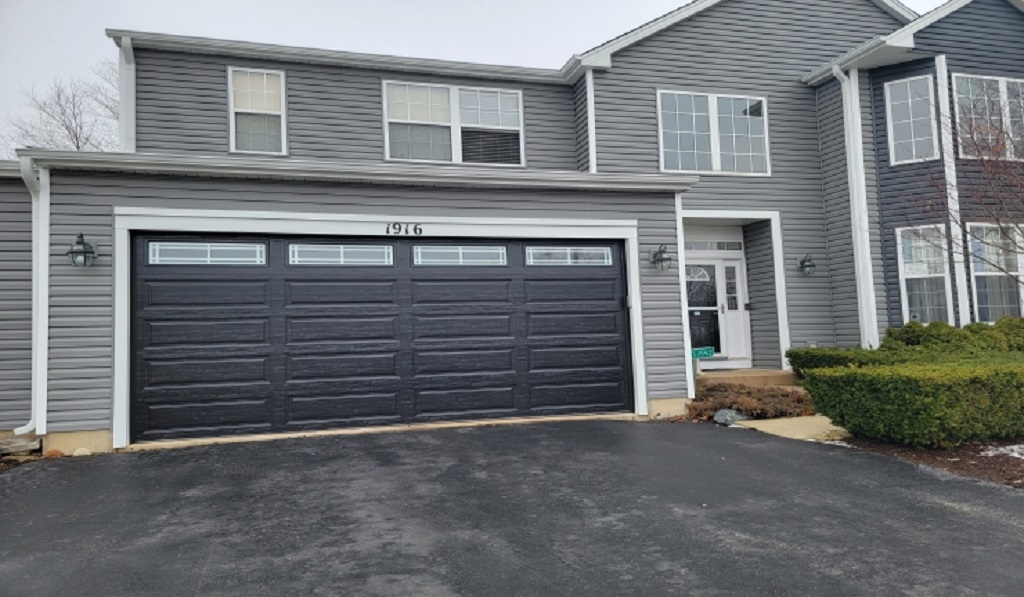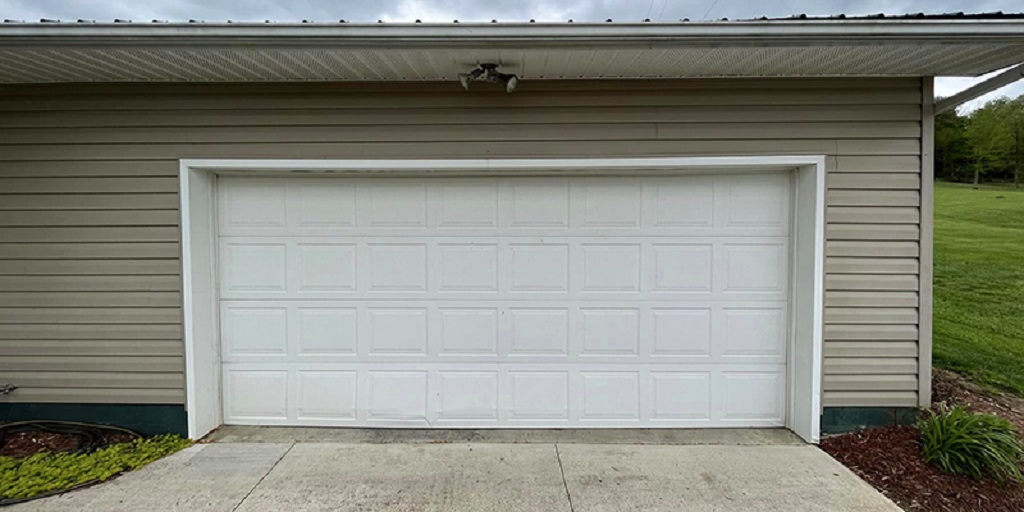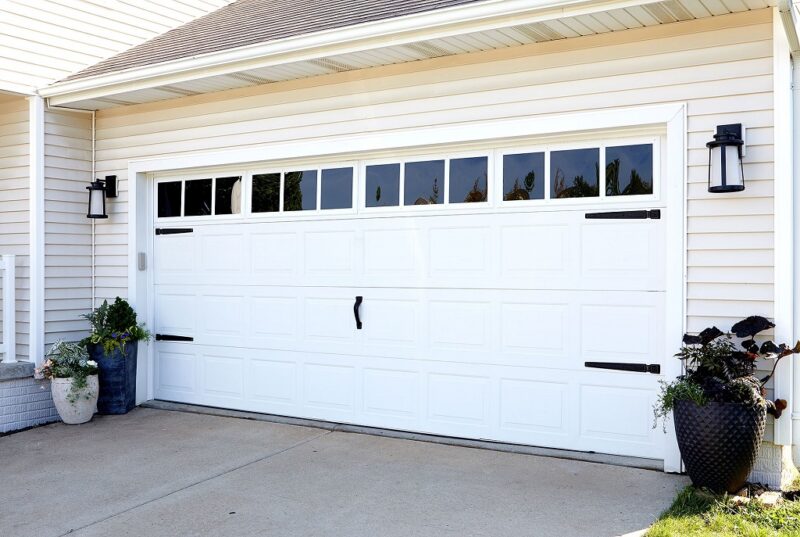Having an aluminum garage door can be an excellent choice for many homeowners. Aluminum is lightweight, durable, and requires little maintenance compared to other materials like wood or steel. However, aluminum garage doors can still become dented or damaged over time and may need repairs. Replacing an entire aluminum garage door can be expensive, but repairing a single damaged panel is often an easy DIY project. Here is a comprehensive guide on how to repair a garage door panel clad in aluminum.
Assessing the Damage

The first step is to thoroughly examine the damaged panel and identify the extent of the problem. Look along the edges and corners for cracks, splits, holes, or punctures in the aluminum skin. Press firmly on the center of the panel to feel for dents, buckling, or soft spots. Check the inside of the panel as well for any damage to the insulation or backing.
Minor dings, scratches, and holes in the aluminum exterior can often be repaired, but any cracks or splits in the metal will likely require complete panel replacement. Damage to the interior insulation also reduces the panel’s structural strength. If the damage is extensive, replacing the panel is the best option.
Removing the Damaged Panel
Once you’ve determined that the panel can be repaired, the next step is to remove it from the garage door. Start by fully opening and locking the door using vice clamps or C-clamps on the door tracks. This will prevent the door from trying to close while you work.
Locate the hinges, rollers, and any vertical support struts along the sides of the panel. The hardware and struts are held in place by screws or bolts that must be removed. Use a socket wrench, pliers, or screwdriver to detach and set aside the panel hardware. Pay attention to the location and arrangement of the parts, as you’ll need to reinstall them later.
With the perimeter hardware detached, the panel can now be unclipped from the adjoining panels. Garage door panels interlock using tongue-and-groove connections. Carefully lift and tilt the panel to pop it out from the weatherstripping on the top and sides. Take care not to bend or damage the edges of the neighboring panels.
Once unclipped, carefully lower the released panel down and set it on a workbench or sawhorse for repair. Temporary shims can fill the open space and prevent drafts until the new panel is installed.
Repairing Minor Aluminum Damage
For minor dings and scratches that do not penetrate the metal, rubbing and polishing compounds can help smooth and minimize the flaws in the aluminum exterior. Start with a less aggressive rubbing compound and use a microfiber cloth to buff out blemishes. Follow up with a polishing wax to restore luster.
Small holes or perforations can often be repaired using an aluminum patch kit. These kits contain thin aluminum sheeting, which can be cut to size and adhered to the damage using specialized glue. Use sandpaper to rough the metal around the hole so the glue bonds tightly. Carefully trim the patch to fit the hole before applying glue and firmly pressing it in place.
Filling Larger Holes and Gaps
A simple aluminum patch may not be enough for larger holes or gaps more comprehensive than a quarter inch. A backer material can be placed inside the panel before applying and adhering to the exterior aluminum patch. Fiberglass mesh works well as an internal reinforcing layer and helps bridge any gaps in support.
Cut a piece of fiberglass mesh slightly larger than the hole. Bend the mesh to create a curvature and gently press it into place on the inside of the panel over the hole. Then, trim a patch of aluminum sheeting to overlap the hole by at least 2 inches on all sides. Sand and rough up the area surrounding the hole before applying adhesive and pressing the aluminum patch firmly over the mesh backing.
Replacing Severely Damaged Panels

Replacing the entire panel is usually required for more extensive damage like large cracks, deep dents or punctures, rotted backing, or holes wider than a few inches. Garage door companies or home improvement stores can order new replacement panels. Please provide them with the damaged panel’s door manufacturer, model, and measurements.
Once you have the new replacement panel, installing it is straightforward. First, ensure the new panel matches the old one – same size, color, design, hardware holes, etc. Sand any rough edges. Then reverse the steps for removing the original panel:
- Attach the perimeter hinges, rollers, and struts in their original locations with new hardware if needed.
- Interlock the tongue-and-groove connections along the sides and top. Engage the weatherstripping.
- Reopen the garage door slowly, keeping an eye on the alignment of the new panel. It should open, close, and lock evenly with the other panels.
- Remove the shims and clamps holding the door open. Test operation several times to ensure proper function. Adjust hardware as needed to align the panel.
- Seal any gaps with weatherstripping or caulk. Paint or touch up the edges to match.
With a bit of time and effort, repairing or replacing a garage door panel is usually a project well within the DIY abilities of most homeowners. Paying close attention to the existing hardware arrangements and properly interlocking the panel connections are critical to a successful repair. Maintaining aluminum garage doors through prompt maintenance will keep them looking great and functioning correctly for many years.
FAQs
Q: How can I tell if my dented aluminum panel needs to be replaced versus repaired?
A: Minor dings and scratches can usually be repaired, but deep dents, cracks, holes wider than 1/4 inch, or any damage to the backing likely requires complete panel replacement. Always thoroughly inspect both sides of the panel.
Q: What is the easiest temporary fix if my panel is badly damaged and needs to be replaced?
A: You can tape up plastic sheeting or attach a solid material like plywood with bolts over the damage until the replacement arrives. Just reinforce it well so the wind doesn’t rip it away.
Q: Is it OK to order just one replacement panel?
A: Yes, most garage door companies can match your existing door and provide a single replacement panel in the same color, material, design, etc., to fit seamlessly once installed.
Q: Can I reinforce a damaged aluminum panel myself if I can’t find an exact replacement?
A: It’s possible but challenging. You’ll need to bend and cut aluminum sheets carefully to patch over holes and dents and match up hinge holes precisely. Fiberglass backing for larger holes helps strengthen the repair.
Q: What’s the easiest way to remove an old rusted panel?
A: Penetrating oil applied liberally for a day or two before removal can help free up rusted bolts and hardware. An angle grinder with a metal cutoff wheel also works quickly to slice through rusted bolts if necessary.
Conclusion
Repairing an aluminum garage door panel is a typical DIY project that most homeowners can tackle successfully. Understanding how garage door sensors work is crucial for an effective repair process. The keys to an effective repair are to assess the damage accurately, remove panels safely, make durable repairs, and properly realign and seal a new panel, ensuring seamless functionality of the sensor system. With suitable materials and a little mechanical skill, you can often extend the life of your aluminum garage door and save the cost of complete door replacement. Keeping aluminum garage doors well maintained with minor panel repairs as soon as damage occurs will keep them functioning smoothly for many years.

